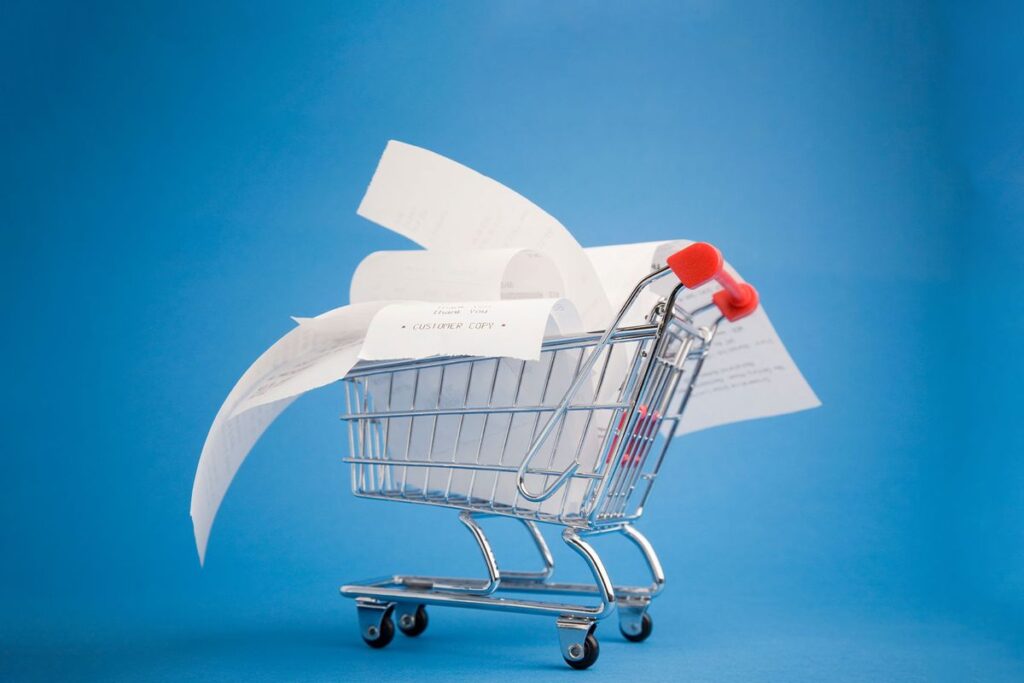Early in the pandemic, the phrase “new normal” was bandied about, as if insisting that the situation had some sort of normalcy would actually make it so. In the new normal, happy hours took place within the digital rectangle of a Zoom conference room, with the inevitable knowledge that someone's WiFi would cut out or their screen would freeze mid-drink. Standing six feet apart during conversations became a courtesy, not a quirk, among those of us who don't trust those we speak to in close proximity. And, for a time, wiping down chip bags and soda cans with disinfectant spray wasn't just for germaphobes.
As time has passed, some pandemic-era habits have faded (including some that public health workers and scientists wanted us to hold on to), but there's one area where many Americans are still adapting to the current “new normal”: supermarkets.
According to new data from the Bureau of Labor Statistics, while food prices have risen moderately over the last year, this month marks the first time since August 2022 that U.S. food prices have risen year-over-year. That means household food costs have risen 24.6% since COVID-19 began in March 2020, which explains why 72% of American respondents in the 2024 survey said groceries are the item they feel is most affected by inflation.
The survey also found that respondents reported feeling more negative emotions while grocery shopping, such as anger, anxiety, and resignation. But inflation isn't just changing how people feel about grocery shopping: It's fundamentally changing the way they actually shop, and not necessarily for the better.
For example, grocery “shopping” is becoming more common among bargain-seeking customers.
According to data from Numerator, the average American bought groceries at 20.7 stores in the year ending in February, up from 16.8 stores during the same period in 2019 and 2020. Similarly, May data from grocery shopping app Flashfood showed that 36% of the platform's users “shopped across multiple retailers” for deals offered through the app, with the company estimating that customers who shop at multiple stores save almost three times more than those who only shop at one store.
Even the Wall Street Journal has declared that “the days of one-stop grocery shopping are over,” but the strategies for getting the cheapest groceries don't end there.
On May 14, the Urban Institute released a new study highlighting how many households will rely on credit and savings, including buy now, pay later (BNPL) options and payday loans, to cover food costs in 2023. According to the institute, “households already facing food insecurity are the most likely to go into debt to pay for groceries, which could make it harder to meet basic needs in the future.”
According to the survey, after using a credit card to buy groceries, about 33.4% of adults were able to pay the bill in full, while 20% only paid the minimum payment and 7.1% failed to meet the minimum payment. The data also revealed that more than one in six adults had used a “buy now, pay later” service in the past year, of which 3.5% had used BNPL for grocery purchases. An astonishing 37% of these BNPL users had missed a payment.
Additionally, 19.3% of adults dipped into savings set aside for other purposes to cover grocery costs. The survey found a significant correlation between financial hardship and the use of alternative payment methods, especially among those with severe food insecurity. Debt repayment issues were more prevalent among those with very low food insecurity, with almost half relying on credit cards to buy groceries but struggling to pay off the balance.
“Access to credit and loans can be a lifeline for families struggling to meet basic needs, but relying too heavily on these financial coping strategies can lead to financial instability as families struggle to pay off debt or drain savings that are not funded by everyday expenses and are never able to recover,” said Cassandra Martinczek, a senior research fellow at the Urban Institute.
The study follows another from the organization in May that found that Supplemental Nutrition Assistance Program (SNAP) benefits did not cover the cost of a moderate-priced meal in 98% of U.S. counties last year. As a result, as part of its recommendations, the Urban Institute is urging lawmakers to reconsider plans to cut funding for the Supplemental Nutrition Assistance Program (SNAP).
Martinczyk continued, “To address the challenges families face in meeting their basic needs, policymakers could increase access to and fulfillment of the Supplemental Nutrition Assistance Program (SNAP) and other safety net programs, while also providing short-term options to help families manage their current debt burden and access affordable credit.”
read more
From Salon Food



